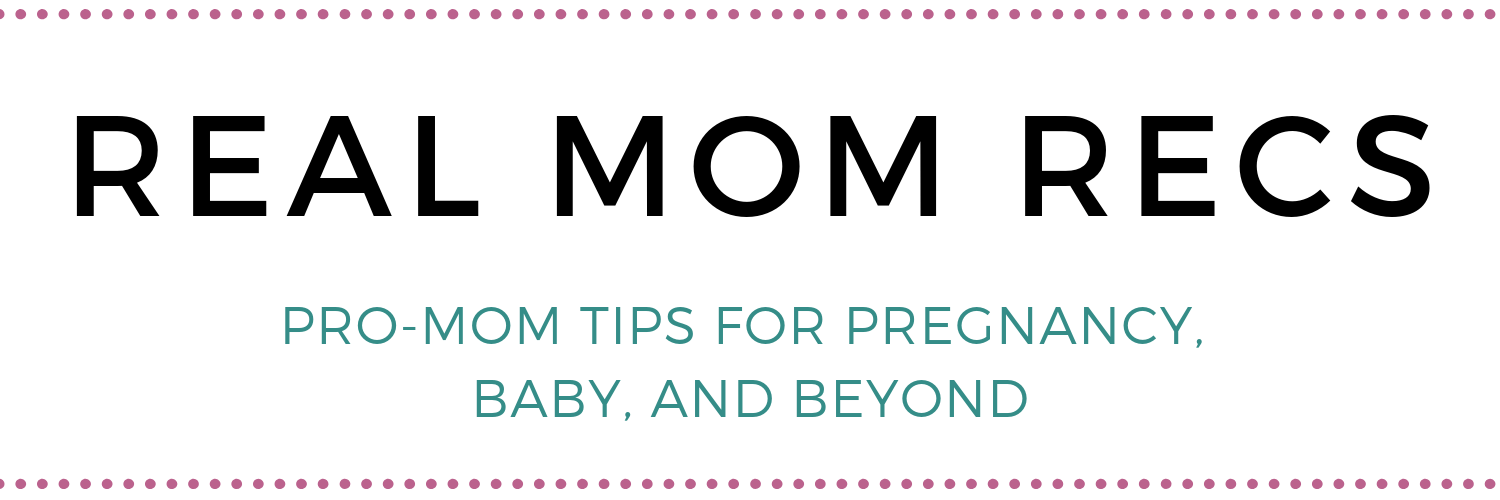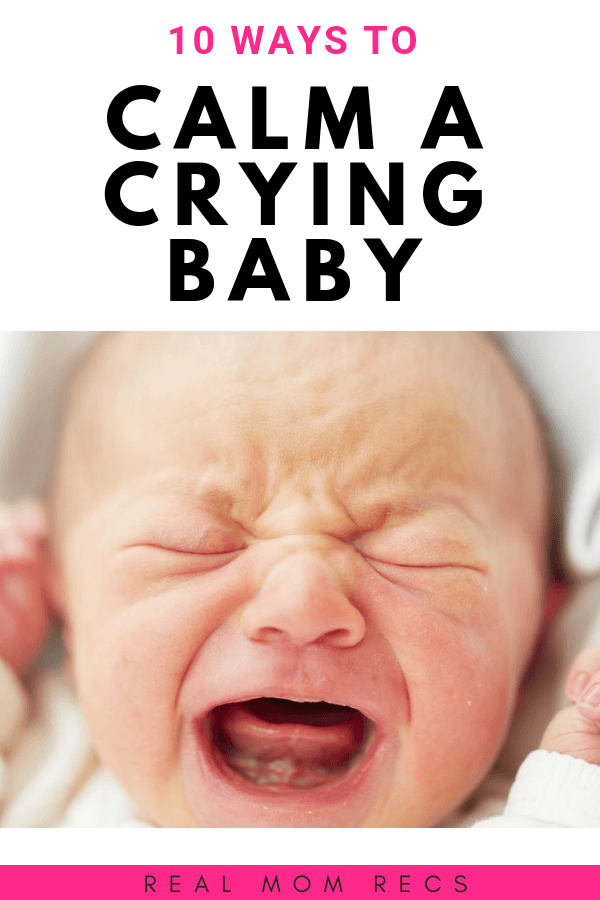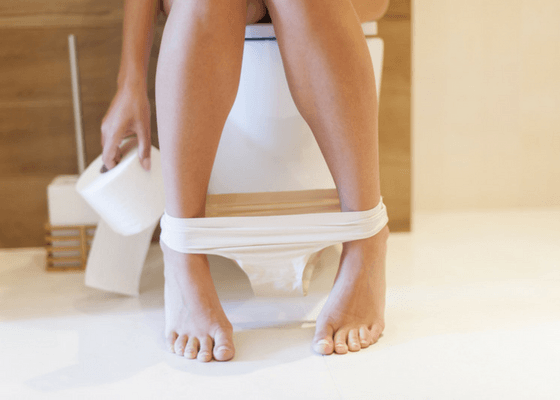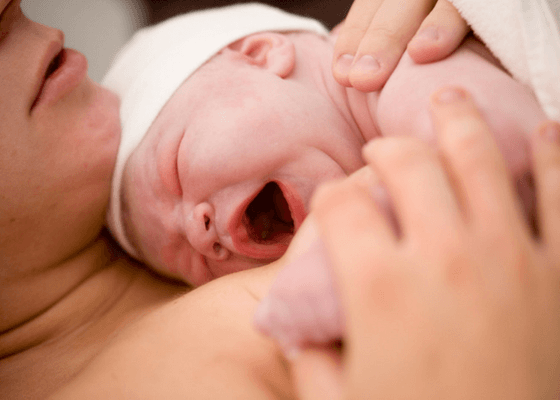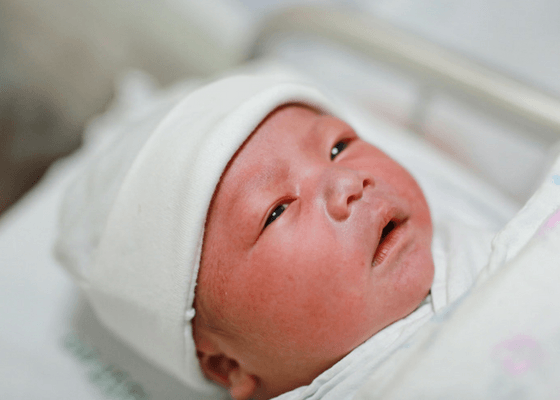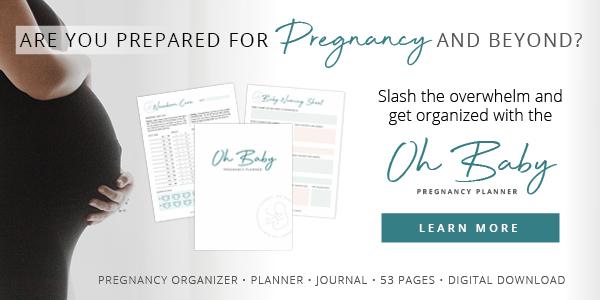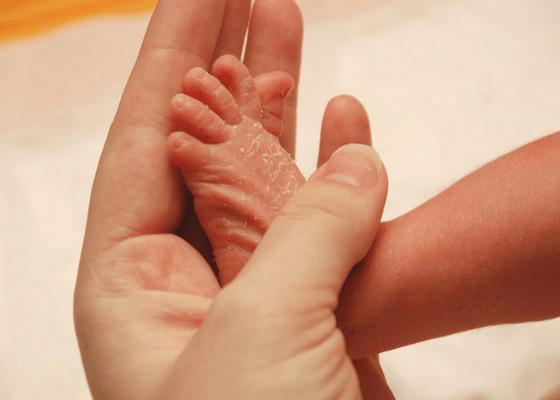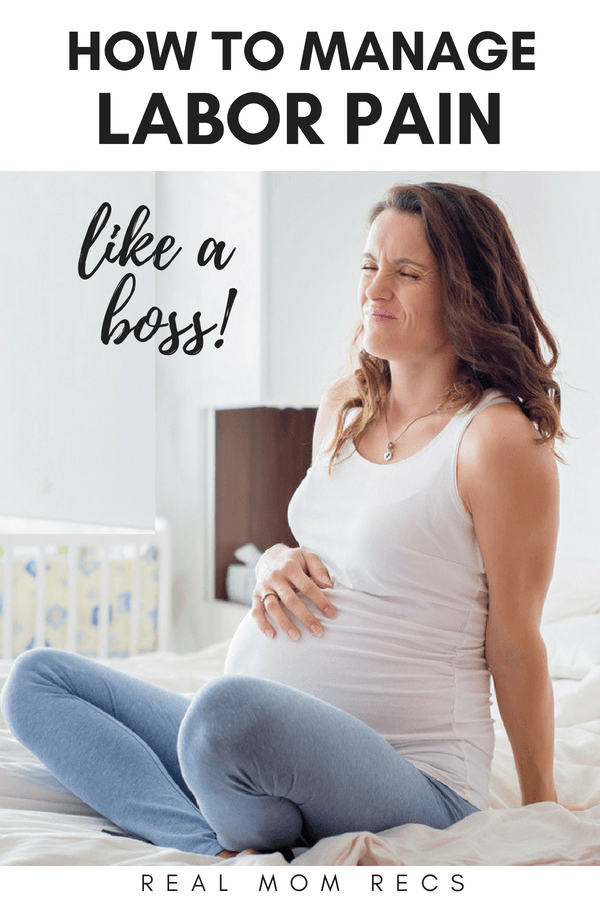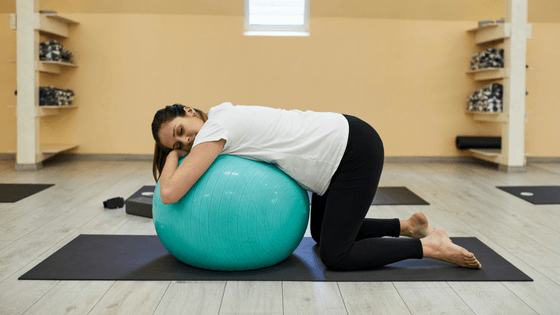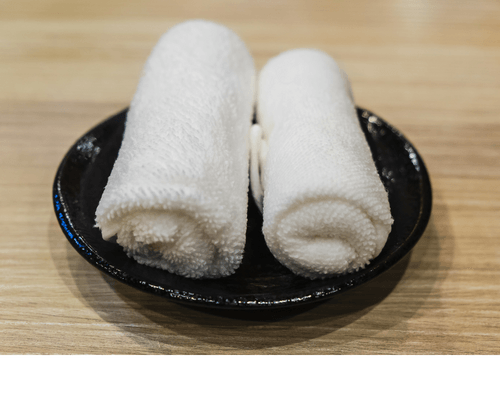Every parent has been there: the night from hell. Baby has been fed, changed, and swaddled up tight, but still won’t stop crying. For some, this happens on a rare occasion. For others, it’s a nightly occurrence (and possibly most of the day as well!) Either way, you will want to try these 10 experienced-mom tricks to calm a crying baby.
Get moving
Remember when you were pregnant and the baby would sleep soundly while you were walking around all day, only to have a burst of energy when you laid down to try and sleep for the night?
Being in motion is soothing for babies.
Capitalize on the calming effects of motion by trying these while holding baby:
- walk around your house while shushing/bouncing baby
- bounce up and down on an exercise ball
- rock in a rocking chair or glider
- push baby in the stroller
- put baby in a swing or mamaroo/rockaroo
You can even sneak a little workout in by holding baby while you do lunges and squats (my husband’s favorite baby hack!)
Try some music
Music has the power to completely change a person’s mood. It should definitely be part of your baby care arsenal!
If singing a sweet lullaby isn’t cutting it for your little one, thrown on a CD or play songs on Alexa. It doesn’t have to be annoying kiddie songs either- put on any tunes that you enjoy. Dance music, relaxing folk songs, classical, maybe some 90s rap- who knows what baby will enjoy.
Get outside
It has been well-documented that being in nature promotes relaxation for all people, babies included.
One of the main benefits of being outside is that fresh air reduces stress hormone levels.
Taking the crying baby outside is also great for the change in scenery: different things to look at and different sounds to distract the baby.
Stephanie of Expect More Clean Less says: “When all feels lost, go outside! A change in scenery/weather is the easiest way to reset if naptime isn’t working, teeth are cutting, baby can’t stop crying. Talking a walk in the woods is good for parent & baby – and using a baby carrier often turns it into naptime without a fuss.”
Go for a drive
I think all parents have gone for a 4am drive with their screaming baby at one point or another. Something about being bundled into the car seat and the motion of the car works so well to make babies sleepy.
It also satisfies that urge you get to bolt from your house after dealing with a fussy baby for a long stretch of time!
Look for pain/discomfort
This is one I always do when the baby seems to be crying unusually hard for no apparent reason. I have read stories of babies who, unbeknownst to the parents, had a hair or a thread wrapped tightly around their toe cutting off circulation and causing them a great deal of pain. If your baby’s cry seems to be indicating pain, this is always something to check for.
Other possible sources of discomfort include:
- baby is too hot or too cold
- teething (run your finger over the gums to see if you can feel anything)
- fever (take baby’s temperature
if you think they feel warm)
- gas (try circling baby’s legs and gently massing their abdomen to help them work it out)
- ear infection (usually comes with a fever so check for that, also note if baby is pulling on or grabbing at their ear)
The worst nights of crying with my babies almost ALWAYS indicated an ear infection, so I quickly learned that if they woke up screaming and had a fever I should give some baby Motrin and take them to the pediatrician the next day.
Put them in water
This was a trick I learned from my second child’s therapist. She said, “when you need to change someone’s mood, just put them in water!”
It sounded a little too simple, but I thought about all the times going for a swim had cured my child of a horrid mood and decided it was worth a try.
The next time my son had a tantrum, even though it was nowhere near bath time, I put him in the bath. And the crankiness turned off as if by a light switch.
You can try this on a newborn too. It doesn’t matter if it’s the middle of the night or if they already had a bath. If baby is inconsolable, strip them down and put them in a warm bath.
You don’t need to use soap or anything, just let them feel the calming effects of the water.
Often times this will be like hitting the “reset” button on your baby’s mood.
Gripe water
I never had to use Gripe Water personally, but some Moms who have dealt with colicky babies swear by it.
It is said to relieve pain from gas, colic, and hiccups and has a pleasant taste (the sweet taste alone may be what makes babies happy, who knows). Just make sure to consult your doctor and follow the dosing instructions before giving any to your baby.
Sensory intervention
I discovered completely by accident with baby number 4 that when he was crying, if I stepped directly in front of the blasting air conditioner, he would stop crying.
Friends of mine have reported similar responses when they open the freezer and hold baby while standing in front of it.
Even if your baby doesn’t feel particularly hot, the sensation of cold is a jolt to the senses that can grab the baby’s attention.
Other sensory interventions could be:
- holding something that crinkles or squeaks
- hearing the sound of a rainmaker
or bells
- lightly brushing the bottom of their feet with a brush
- chewing on a rubber toy
- squeezing a squishy ball.
Just like older children who respond to sensory input when they’re having a tantrum, babies thrive on the right amount of sensory input. Having one sensory-stimulating object provides them the right amount to focus on without being overstimulated.
Do a hand off
If it’s the middle of the night an you’ve been walking around baby’s room for the last hour while they scream, guess what: you’re frustrated.
Not only do I know you’re frustrated, but your baby knows it too.
Your baby can feel the tension in your muscles, your breathing and heart rate. Instead of making them feel safe and calm, your tension is adding to their own frustration.
This sets off a negative cycle of biofeedback between the two of you.
Break that cycle by switching off with someone else. (Most likely this would be Dad, unless you have one of your parents or another adult there to help you.)
When you hand off the baby to a new person, he or she will immediately feel the shift in energy. This person is “fresh”, they aren’t as stressed or tense as you are in that moment.
After you do the hand off, leave the room. Go do something that relaxes you. Even if Dad can’t calm the baby down, you can get to work on calming yourself down.
Change your mentality
Sometimes babies just cry as a release, without any problem that needs fixing.
Crying is a scary but normal newborn behavior. It is also a form of exercise for babies.
No, changing your mentality is not likely to make your baby stop crying. But it might make it less gut-wrenching for you to listen to.
If you have tried everything and baby is still wailing, just hold them and let them cry. This is in no way neglectful; they will know you are there for them.
Repeat a mantra for yourself like “Babies cry. This will pass.”
And truly, it will pass. The amount of time babies spend crying decreases at the six week mark and drops off significantly by 3 months of age. You will get used to the crying just when it starts to decrease and fade away.
If your baby continues to cry more than a typical baby (especially if accompanied by other symptoms such as poor weight gain), discuss your concerns with your doctor.
What is your go-to method to calm a crying baby?
I’d love to hear from you!
And for more on pregnancy, babies, beyond, be sure to follow me on Pinterest:
